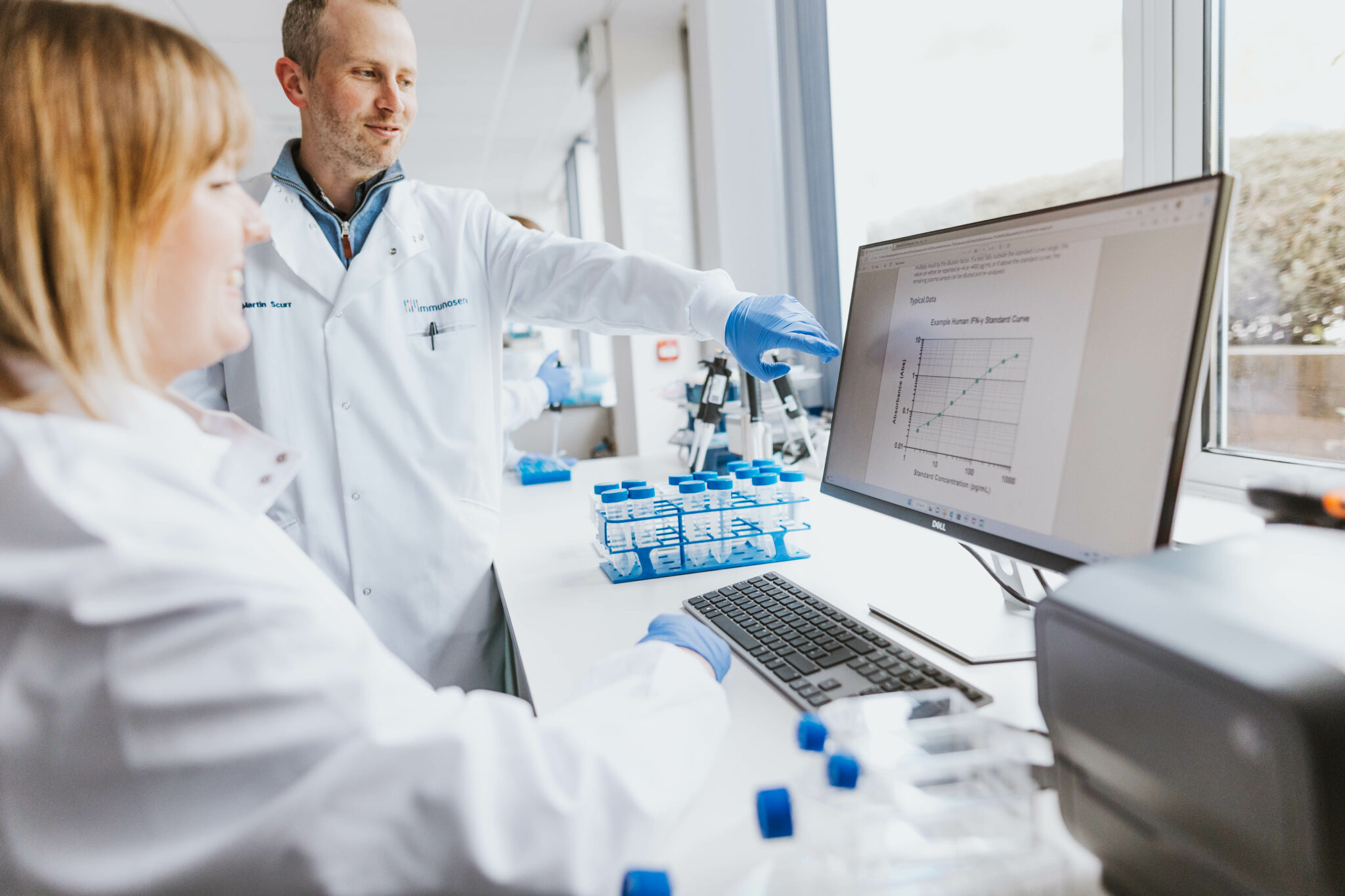COVID-19 is back on the rise – is waning immunity really to blame?
11 August 2023
The UK is currently in the midst of another wave of COVID-19, causing increases in hospitalisation rates [1]. Whilst the UK Health Security Agency do not believe the newly emerged and currently circulating SARS-CoV-2-Omicron subvariants to be any more dangerous than previous strains, experts have attributed the current wave to both increased indoor mixing and waning immunity [2]. But what data do we have to show that population immunity is in fact waning?

Primarily this comes from assumptions based on studies performed earlier in the pandemic to show the longevity of COVID-19 vaccine and infection induced immune responses [3,4]. Since the closure of the ONS COVID-19 Infection Survey and the termination in funding for other national COVID-19 studies, the UK has significantly reduced its capacity to both monitor current levels of population immunity and prepare for future pandemic threats.
Instead, the expectation now is for personal risk management, relying on each individual to assess whether they are prone to severe infection based on their own history of vaccination and/or prior infection. Whilst vaccination remains the best course of protection, only certain groups deemed higher-risk by the JCVI remain eligible [5]. The list of eligible people was recently reduced and only those aged 65 and over are included, unless they are a carer, health professional, immune-compromised, or in another clinical risk group. Yet even for these individuals, there is still no complete assurance of protection against severe COVID-19 offered by vaccination. In particular, immune-compromised individuals may routinely fail to mount sufficient immune responses to booster jabs. Indeed, vaccination efficacy is poorly assessed outside of research studies, thus individuals have no idea how long they may personally be protected for, if at all.
As such, understanding each person’s immunological response to SARS-CoV-2 is now more important than ever. Whilst no single test can definitively define whether you are protected from infection and/or severe disease, the presence of antibodies and T cell responses specific for the virus are necessary to confer protection. Indeed, as reported by experts at ImmunoServ [6] and others [7,8], the T cell response to SARS-CoV-2 is now thought to be a critical factor for preventing infection and limiting severity. In addition, T cell responses have been shown to persist for longer than antibodies and offer greater protection to new variants of concern [9]. Thus care must be taken when reporting ‘waning immunity’ if only antibody measures are considered, as was the case for multiple larger scale population immunity studies, including the ONS COVID-19 Infection Survey.
However, T cell testing for the masses is in its infancy: tests that are commonly performed in academic research labs are notoriously difficult to standardise, require expensive equipment and highly trained lab personnel. At ImmunoServ, we have developed a scalable, standardised test to routinely measure both T cell and antibody responses to SARS-CoV-2. This is the most complete test for measuring immunity to COVID-19 available to clinicians, researchers and now the public. Our very latest (unpublished) results are showing significant waning of T cell responses in healthy adults who are now nearly two years since their last COVID-19 booster vaccine or prior infection. It therefore appears likely that the current wave is, at least in part, due to the reduced ability of T cells to rapidly identify and respond to newly mutated SARS-CoV-2 variants.
Scientists and clinicians across multiple studies are using ImmunoServ’s Immuno-T test in their research and clinical practice to assess individual’s immune responses [6,10,11]. If you are interested in better understanding your own immune response to COVID-19, ImmunoServ now offer a convenient at-home version of the COVID-19 Immuno-T test.
References
- Coronavirus (COVID-19) in the UK. https://coronavirus.data.gov.uk Accessed on 10th August 2023.
- Covid-19: Hospital admissions rise in England amid fears of new variant and waning immunity. BMJ 2023; 382:p1833.
- Abu-Raddad LJ and Chemaitelly H. The elusive goal of COVID-19 vaccine immunity. Lancet Respiratory Medicine 2023; 11(2):p115-117.
- Zuo J. et al. Robust SARS-CoV-2-specific T cell immunity is maintained at 6 months following primary infection. Nature Immunology 2021; 22:p620-626.
- JCVI statement on the COVID-19 vaccination programme for autumn 2023, 26 May 2023. https://www.gov.uk/government/publications/covid-19-autumn-2023-vaccination-programme-jcvi-advice-26-may-2023/jcvi-statement-on-the-covid-19-vaccination-programme-for-autumn-2023-26-may-2023 Accessed on 10th August 2023.
- Scurr M. et al. Magnitude of venous or capillary blood-derived SARS-CoV-2-specific T cell response determines COVID-19 immunity. Nature Comms 2022; 13;5422
- Swadling L. et al. Pre-existing polymerase-specific T cells expand in abortive seronegative SARS-CoV-2. Nature 2022; 601;p110-117.
- Bertoletti A. et al. SARS-CoV-2-specific T cells in the changing landscape of the COVID-19 pandemic. Immunity 2022; 55:p1764-1778.
- Guo L. et al. SARS-CoV-2-specific antibody and T-cell responses 1 year after infection in people recovered from COVID-19: a longitudinal cohort study. Lancet Microbe 2022; 3(5):e348-356.
- Tallantyre E. et al. COVID-19 vaccine response in people with multiple sclerosis. Annals of Neurology 2022; 91(1):p89-100.
- Bradley R. et al. Persistent COVID-19 infection in Wiskott-Aldrich syndrome cleared following therapeutic vaccination. Journal of Clinical Immunology 2022; 42(1):p32-35.
